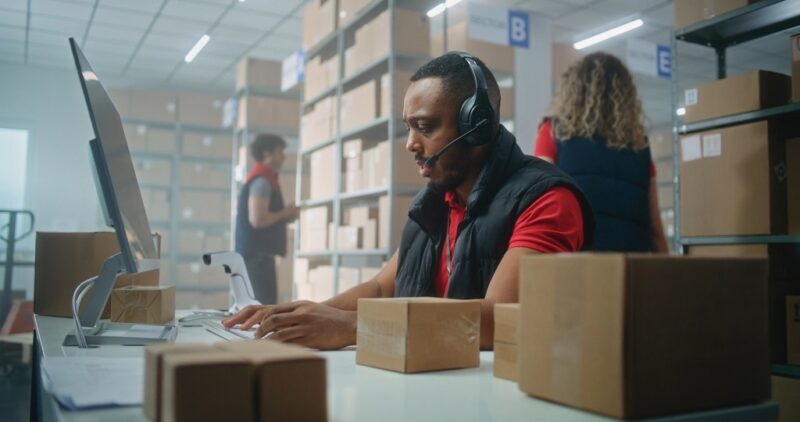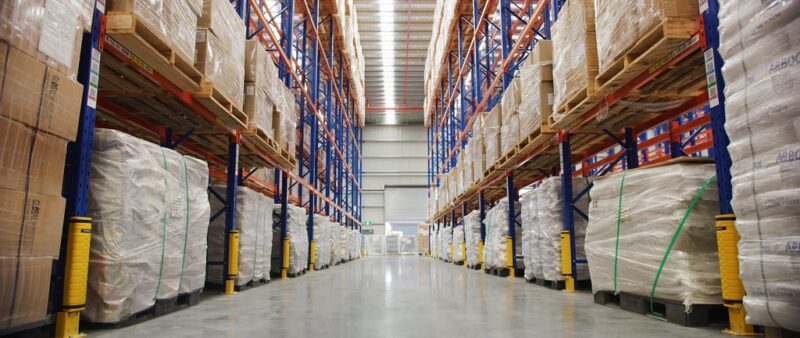If you run a small online store, your supply chain is either your silent hero or the hidden reason you’re constantly stressed.
Here’s the concrete truth: the most effective supply chain strategy for small retailers in 2025 is to keep inventory lean but visible, use at least one reliable software for stock tracking, partner with flexible suppliers (not the cheapest ones), and outsource fulfillment only when order volume justifies it.
That’s the backbone of a supply chain that won’t fall apart during peak season or burn cash when sales dip.
Most small e-commerce owners aren’t trying to run Amazon. You’re likely juggling sourcing, customer service, packing orders, marketing, and returns – often alone or with one helper.
So instead of overbuilding your logistics, the goal is to build just enough structure to handle what you sell now, while making it easy to scale later.
Build Supplier Relationships That Work for Small Volumes

If your business depends on just one supplier and they mess up, your entire store stalls. That’s why you need more than cheap pricing – you need people who will answer emails quickly, give realistic lead times, and offer flexibility on minimum orders.
This is especially critical if you rotate products often or sell seasonal goods.
Here’s what to prioritize in suppliers:
- Low or negotiable MOQs
- Fast replies (within 24–48 hours)
- Honest lead time estimates
- Clear restocking timelines
- Ability to package or label as needed
| Supplier Attribute | Why It Matters for Small Retailers |
| MOQ Flexibility | Reduces overstock and upfront costs |
| Fast Communication | Solves issues before they become disasters |
| Optional custom labeling | Saves you time and makes scaling easier |
| Consistent stock flow | Keeps bestsellers from going out of stock |
You can operate with one core supplier – just make sure they’re solid. Then have a second option lined up for your top SKUs in case something goes sideways.
Use Prep Centers to Offload the Heavy Lifting

Small store owners often try to do everything: store products, prep orders, print labels, and ship from home. That works when you sell 5–10 items a week, but once volume picks up, this turns into chaos. That’s where prep centers come in.
Prep centers receive your inventory, inspect it, label it, and ship it to customers or Amazon, without you touching a thing. This is ideal if you’re selling private label, using a 3PL, or running an FBA-based store but don’t want to handle logistics yourself.
You can find U.S.-based prep centers that offer:
- Inspection and photo documentation
- FNSKU labeling for Amazon
- Bundling or kitting
- Direct-to-customer shipping (like a light 3PL)
- Returns handling
If you want a prep partner that specializes in flexible support for small e-commerce brands, you can find on this site a team that handles fulfillment steps you don’t have time for.
Prep centers also help if you’re importing items, buying wholesale pallets, or launching new products you want to test before full-scale fulfillment.
Forecast Demand Without Fancy Software

A lot of small retailers rely on gut instinct or supplier advice to guess how much to reorder. That’s risky. Instead, use your order data to build a basic demand forecast – nothing complicated, just enough to avoid stockouts or dead stock.
Start by looking at:
- The past 30, 60, and 90-day sales for each item
- Google Trends (seasonality for your niche)
- Email or promo campaigns that may drive spikes
- Upcoming holidays or planned influencer posts
| Data Point to Watch | How It Helps You Plan |
| Sales per SKU by week | Sets average demand |
| Supplier lead time | Tells you when to reorder |
| Promo calendar | Predicts short-term demand surges |
| Returns volume | Helps avoid overordering poor SKUs |
You don’t need AI-driven forecasting tools. A good spreadsheet and three months of clean data are often all it takes to predict what’s next.
Keep Inventory Tight But Visible

Carrying too much inventory ties up your cash. Too little, and you lose sales. The solution? Track everything – and automate alerts for restocking. Even basic inventory software can give you that.
Look for tools that:
- Sync across Shopify, WooCommerce, Amazon, etc.
- Send low-stock alerts automatically.
- Track the cost of goods sold (COGS) per SKU
- Create reorder reports based on historical data.
| Tool | Best For |
| Shopify Stocky | In-platform users needing forecasts |
| Inventory Planner | Syncs with most platforms; smart reorders |
| Zoho Inventory | Multi-channel, affordable for small biz |
| Google Sheets + Formulas | Still great if used with discipline |
Don’t spend hours counting stock or guessing. Use software that scales with you – even free tools work great until you’re doing 50+ orders a day.
Choose the Right Fulfillment Flow
Should you ship from your home? Use a 3PL? Stick with FBA? Here’s how to think about it:
| Fulfillment Method | Best For | Pros | Cons |
| In-House | Small batch, handmade | Full control | Time consuming |
| Amazon FBA | Fast-moving SKUs | Prime badge, speed | Fees, prep complexity |
| 3PL (e.g,. ShipBob) | 100+ orders/month | Hands-off | Expensive for low volume |
| Prep Center | Testing new SKUs, small brands | Affordable, scalable | You still manage shipping labels |
Most small retailers start in-house, then add prep centers or partial FBA for scaling products. You don’t need to jump to a 3PL right away – outsource the parts that slow you down first.
Returns Process Should Be Fast and Friction-Free
If it takes you more than 48 hours to process a return or your policy is vague, you’re losing customer trust – and maybe even positive reviews. Fix this by setting a clear returns workflow:
- Use return portals like AfterShip, Loop, or simple Google Forms
- Pre-print return labels for high-return items
- Restock eligible returns fast (with inspection)
- Automate refund triggers once tracking shows delivery
Stay in Sync With Fewer Tools
A fractured system causes delays. One app for orders, another for messages, a spreadsheet on your laptop, and your supplier on WhatsApp – this will break at scale.
Unify your operations with:
- Order sync + alerts in one tool
- One dashboard for inventory + returns
- Shared Google Drive or Notion workspace for SOPs
- Slack or Microsoft Teams for internal chats
Make everything one or two clicks away – not buried in different inboxes and tabs.
Final Thought
You don’t need a giant warehouse, a team of logistics pros, or enterprise software to run a smooth supply chain. But you do need to get intentional. A few good suppliers.
A prep center that makes sense for your products. Some real visibility into what’s in stock and what’s selling. That’s enough to stay nimble, fulfill orders fast, and keep customers happy, without burning out.
Every month, look at where things are getting stuck. Is it shipping? Reordering? Too much stuff in your hallway? Fix one link at a time. You’ll feel the chain tightening into something strong enough to scale.

